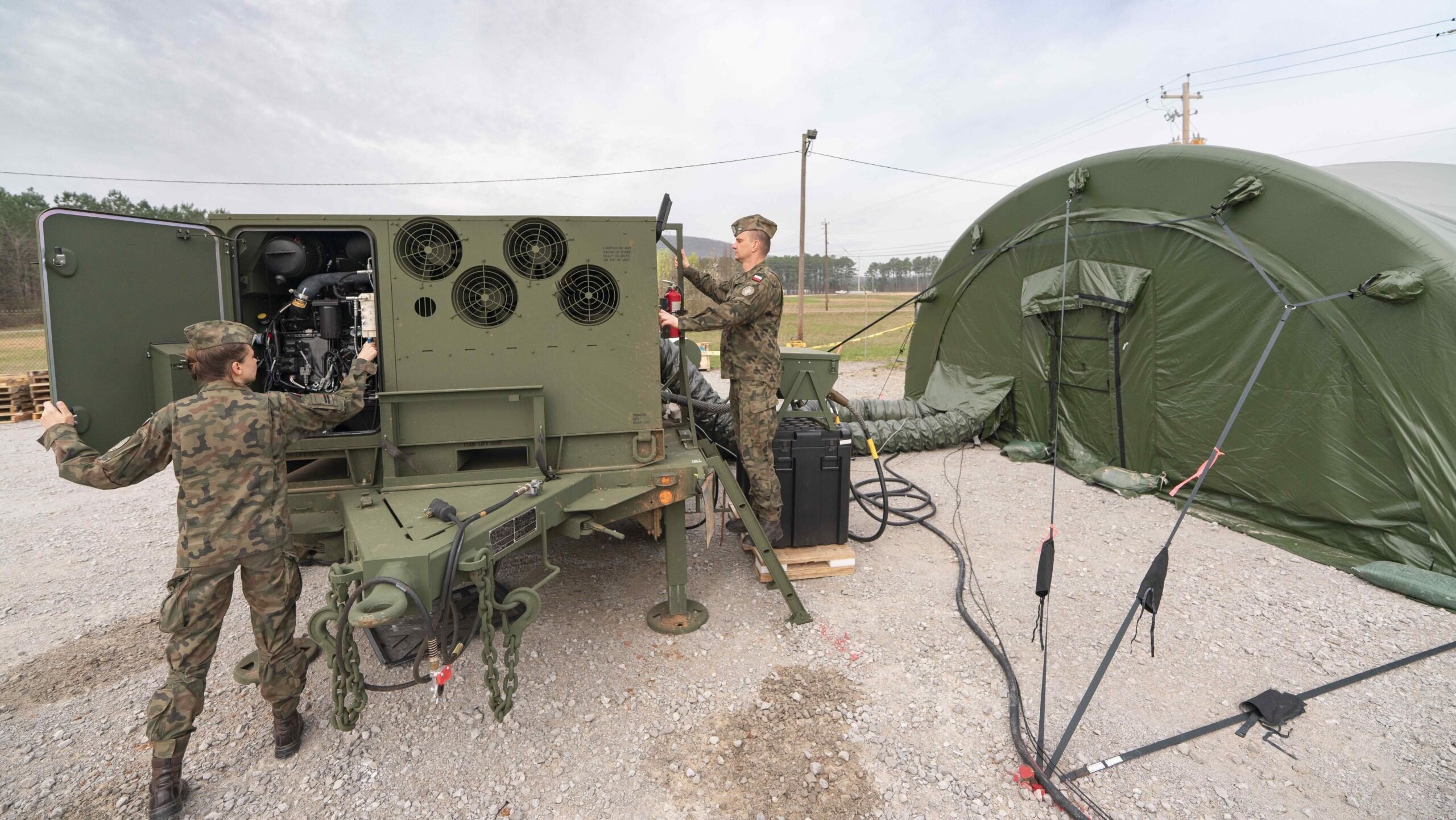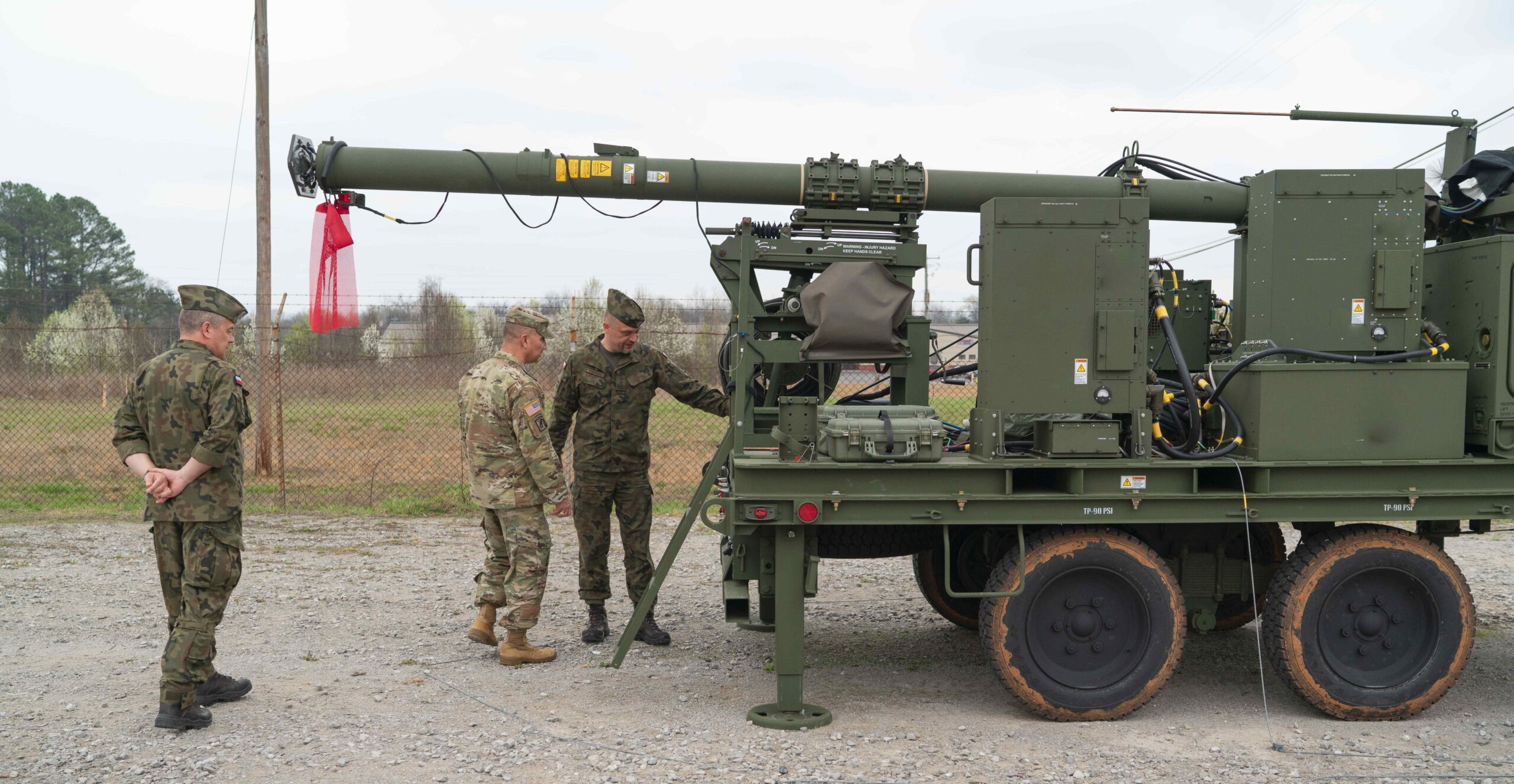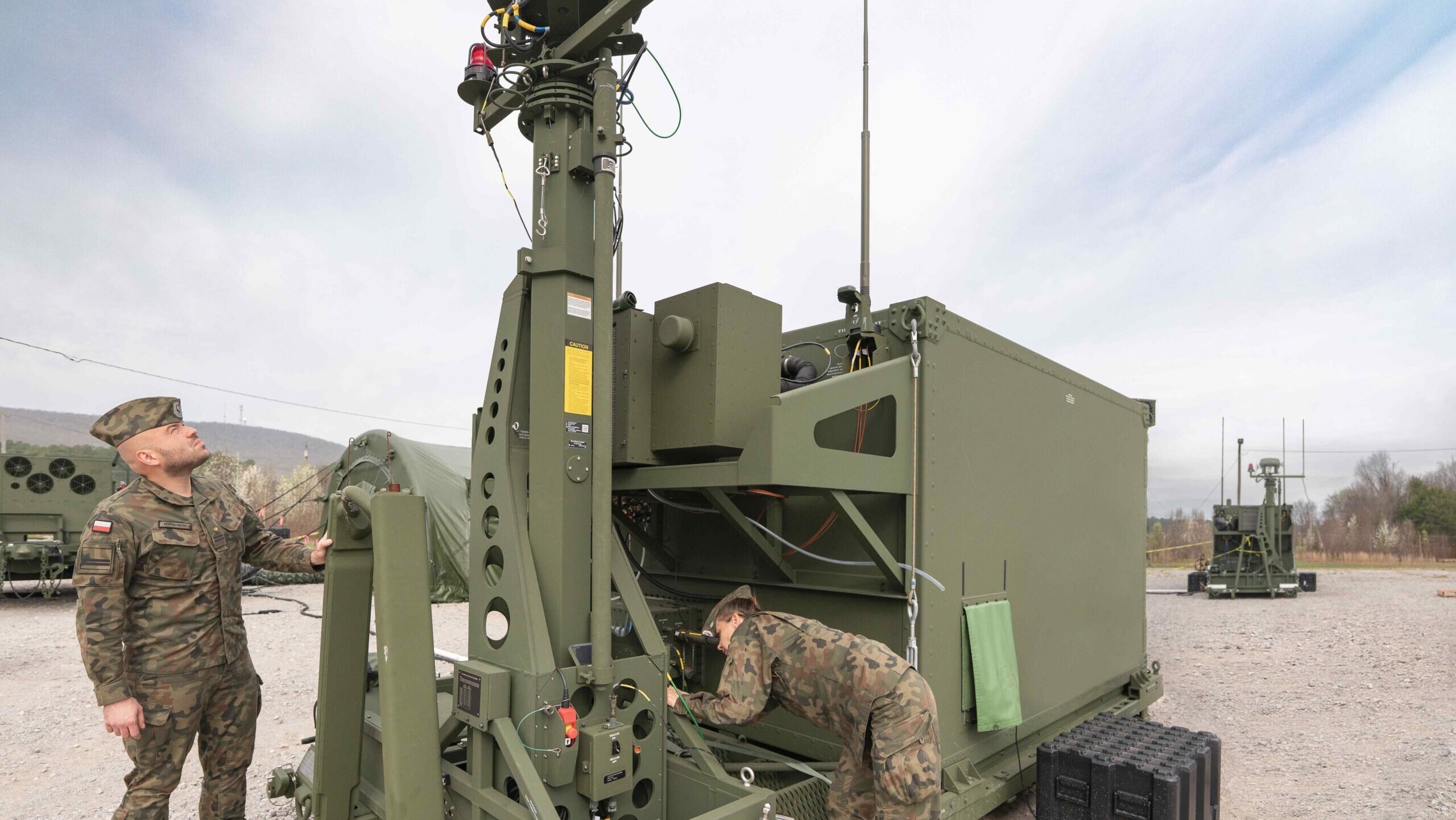
Polish soldiers prepare for IBCS training at Redstone Arsenal, Alabama. Northrop Grumman’s Air Defense Reconfigurable Trainer provides the infrastructure to teach soldiers how to use IBCS in both group and self-paced training environments. (US Army)
WARSAW — Northrop Grumman expects the US government to finalize a sale of its Integrated Air and Missile Defense Battle Command System (IBCS) to Poland, potentially worth $4 billion, “very, very soon,” according to a company official.
The comments came during a high-level visit from Northrop executives to Warsaw last week, where company officials stressed that Poland is a centerpiece of the American firm’s international expansion plans.
“It’s clear to all of us … Poland is on the front line, stepping up to defend its homeland and our NATO alliance,” said Kathy Warden, Northrop Grumman CEO, during comments here on Nov. 16.
“Our joint focus on being at the forefront of technology means Poland has already started to field the most advanced air and missile defense in Europe, with Northrop Grumman technology, with opportunities to build a true multi-domain force which will give Poland the power to set the conditions for its deterrence and defense, for years to come,” Warden added.
Warden was among a group of high-level company leaders who came for a series of meetings with both Polish government officials and local industry. The latter is particularly important, as Northrop is building its global growth strategy around partnering with local industry, Steve O’Bryan, the company’s head of global strategy, told Breaking Defense earlier this month.
Speaking to reporters at least week’s event, O’Bryan empathized that “We have a chief executive here in Warsaw as well as an office in that we have investments in new missions that we’re starting with PGZ, and we intend to do that partnership, while we will grow the Northrop Grumman footprint. And here, our desire is really to partner with PGZ, and the rest of the Polish industry and defense companies.”
“That means we will headquarter out of Warsaw for the entire Central European region,” O’Bryan emphasized.
While the visit from the Northrop executives did not coincide with any major announcements, an example of the kind of partnering the company is looking at came up on the sidelines. Warden told Reuters that the company is “looking at co-production opportunities for” 120 mm tank ammunition, saying that the company still needed to “find the right industrial partners and the right contract structures. But all of that work is underway.”
Przemyslaw Kowalczuk, deputy chief executive of the Polish Mesko company, told Reuters that his company is in discussions with Northrop in setting up a system which would see current production of the low-thousands turn into 50,000-70,000 rounds annually.
IBCS As Key For Northrop’s Polish Push
At the heart of Northrop’s push into Poland is its IBCS, designed for the US Army and rebranded for global consumption as “BattleOne.”
The system is designed to be a C2 node that is open-architecture, meaning you can combine missiles and radars from different systems together — something the company sees as a winning pitch, given how many nations around the globe have a mix of US, European and indigenous kit, such as a series of domestic air defense developments underway in Poland.
Poland already has an agreement on IBCS, signed in March 2019. That effort specifically covers integration with the Wisła medium range air defense program, the local name for the Patriot system.

Polish and American servicemembers inspect the Wisła relay at Redstone Arsenal, Huntsville, Alabama. (Photo Credit: US Army)
There has been steady progress on getting ICBS up and running in Poland. In June, the company completed work on the installation of Air Defense Reconfigurable Trainer, used to train Polish military on the air defense system. On Sept. 8, Poland’s 37th Air Defense Squadron declared Basic Operational Capability on the Wisła/IBCS team-up. Initial Operational Capability on Wisła is expected in 2024.
Bill Lamb, Northrop Grumman program director for IBCS, told local media that “the complete complement of IBCS capabilities have been delivered here in Poland. Over the next several months, we will continue to conduct new equipment training, all the work associated with integrating IBCS with the [Wisła] system that’s been fielded here that has been completed, we’ve completed system integration and checked out and actually done demonstration work. In over the next six to nine months, we will be continuing to build the program.”
“The unit [37th Air Defense Squadron] will undergo unit cognitive training. And there’ll be a team from the US Army that is deployed here beginning in February next year,” Lamb continued. “And they’ll be good supporting and assisting Poland with unit collective training, which is really the last phase of training before Poland would declare an Initial Operational Capability, which we would anticipate sometime in next summer.”
Second IBCS Contract Still To Be Finalized
In September, the US State Department cleared another IBCS tranche, with an estimated price tag of $4 billion, for Poland. This would involve 93 IAMD IBCS’ Engagement Operation Centers (EOC) and 175 IBCS Integrated Fire Control Network (IFCN) relays, as well as network encryptors and IBCS software development and component integration.

Polish soldiers work with the IBCS Engagement Operations Center (EOC) during training at Redstone Arsenal in Huntsville, Alabama. The EOC is a mobile command and control center where and missile defense battle management functions and operations are performed. (Photo Credit: US Army)
The number of EOC and IFCN indicates that this request won’t just cover Wisła, as its second phase includes six squadrons (each of them needs from several to a dozen or so EOC and a dozen or so IFCN forming a communications network). Speculation has been that the goal is to integrate IBCS into the domestically-grown Narew SHORAD effort, which includes 23 batteries with 138 iLauncher launchers for CAMM/CAMM-ER missiles.
Lamb confirmed that is the plan, stating that Narew “will incorporate the integration of five Polish-made sensors, as well as MBDA CAMM-ER missile system that’s been selected.”
The executive continued: “So when you have very much of a focus there, that’s what will be included in the in the offering of the FMS agreement in terms of what Poland has requested from the US government. And so the scope of that program will be our focus around delivering that program for Poland, just as we have for the Wisła program so far.”
“The US government is very close to offering the FMS program in an FMS agreement we refer to as a Letter of Offer and Acceptance. And our expectation is that Poland should be offered that very, very soon — we actually hoped that perhaps we might be able to announce it here that it actually been offered, but it’s not yet,” Lamb said.
Asked whether there was reason to be concerned about that contract not being signed yet, Lamb said “there’s some aspects that I obviously wouldn’t want to want to comment on. But that it’s a very large program. It takes a lot of technical interchange, to underpin the work associated with getting it, and including it in the FMS agreement that will be offered.
“We have to notify the Congress around a proposed acquisition by an another ally, so that takes some time you have to notify, wait for review and approval. I’m not suggesting that that was a reason for why we are not yet have the FMS agreement in place. But I would tell you from my perspective, it’s moved reasonably over the last six to nine months.”
He added Northrop is “very close” to an agreement on offsets, industrial giveaways that local governments sometimes require from US industry when buying American weapons. That may involve selling Polish components to any future users of IBCS; for integration with Poland’s domestic systems, there will need to be production done locally anyway.






















